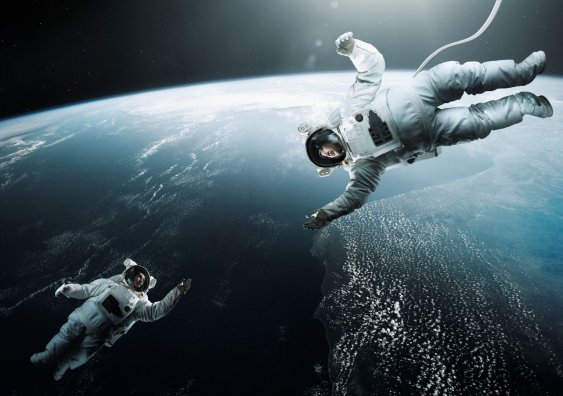Unravelling the impacts of space travel
A UNSW Sydney researcher has been awarded a $1m grant by the US Air Force to investigate what happens to earthly life in reduced gravity.
A UNSW Sydney researcher has been awarded a $1m grant by the US Air Force to investigate what happens to earthly life in reduced gravity.

Associate Professor Kate Poole from UNSW Medicine & Health has been awarded close to $1 million from the US Air Force's Asian Office of Aerospace Research and Development to investigate the effects of reduced gravity on living organisms.
“During and after space missions, astronauts suffer many health problems, including loss of bone and muscle mass,” A/Prof. Poole said.
“If we plan to go to space more often in the future, we need to know how living organisms that have evolved on Earth and its gravitational forces might be affected or disturbed.”
She explains it is likely these living organisms may function differently when gravitational forces are diminished. A/Prof. Poole’s research will focus on key molecules involved in changing how biological systems work in reduced gravity, and it will seek to better understand what happens when the function of these molecules is modified.
“NASA has promised to send humans to Mars by the 2030s. Fundamental understanding of how spaceflight affects biological systems could help inform future studies to improve health outcomes for astronauts, and even to help grow food to sustain longer missions,” A/Prof. Poole said.
Interim Dean of UNSW Medicine & Health Professor Adrienne Torda congratulated A/Prof. Poole on receiving the grant from the US Air Force.
“This grant will allow Kate and her team to expand their research into what happens to earthly life as we travel out of the earth’s atmosphere,” Prof. Torda said.
Read more: What does space travel do to our cells?
“The team started their investigation into the effects of reduced gravity two years ago thanks to a grant from the United States Air Force Office of Scientific Research. I look forward to seeing the progress of this fascinating new research focusing on the impacts on biological function.”
The initial study aimed to investigate if force-sensing molecules were involved in detecting changes in gravity. The team realised the effects of microgravity (the condition in which people or objects seem to be weightless) on living systems are likely caused by fundamental changes in the systems under reduced gravity.
“I don’t think the force-sensing molecules are detecting changes in gravity. I think that they likely function differently as a result of the changes to their mechanical environment,” A/Prof. Poole said.
“So, we are taking a step back to look at the bigger picture of biological changes, rather than focusing on the functions of force sensing molecules.”
To mimic the apparent weightlessness of space in the laboratory, A/Prof Poole’s team will use a microgravity simulator to investigate the impact of reduced gravity on human red blood cells and yeast.
The researchers have observed a profound change in red blood cell shape already after two hours in microgravity. Their next steps are to explore how this shape-shift happens and how these changes affect the function of the cells.
“This now gives us a really cool system to test if these changes are altered when we modify certain proteins. That way we can start piecing together the molecular underpinnings that drive cellular adaptations to microgravity,” A/Prof. Poole said.
The next stage of experiments with red blood cells could shed light on why astronauts present with a loss of red blood cells during space travel that could lead to spaceflight anaemia.
“Like any discovery science, if you understand how a system works, it gives you a starting point for looking at ways to manipulate it. The more we understand about the underlying process, the better off we’re going to be in terms of working out ways to mitigate the negative impacts of microgravity,” A/Prof Poole said.
“People have been trying to understand what happens to earth-based biology in microgravity for decades. It’s a very challenging subject.”